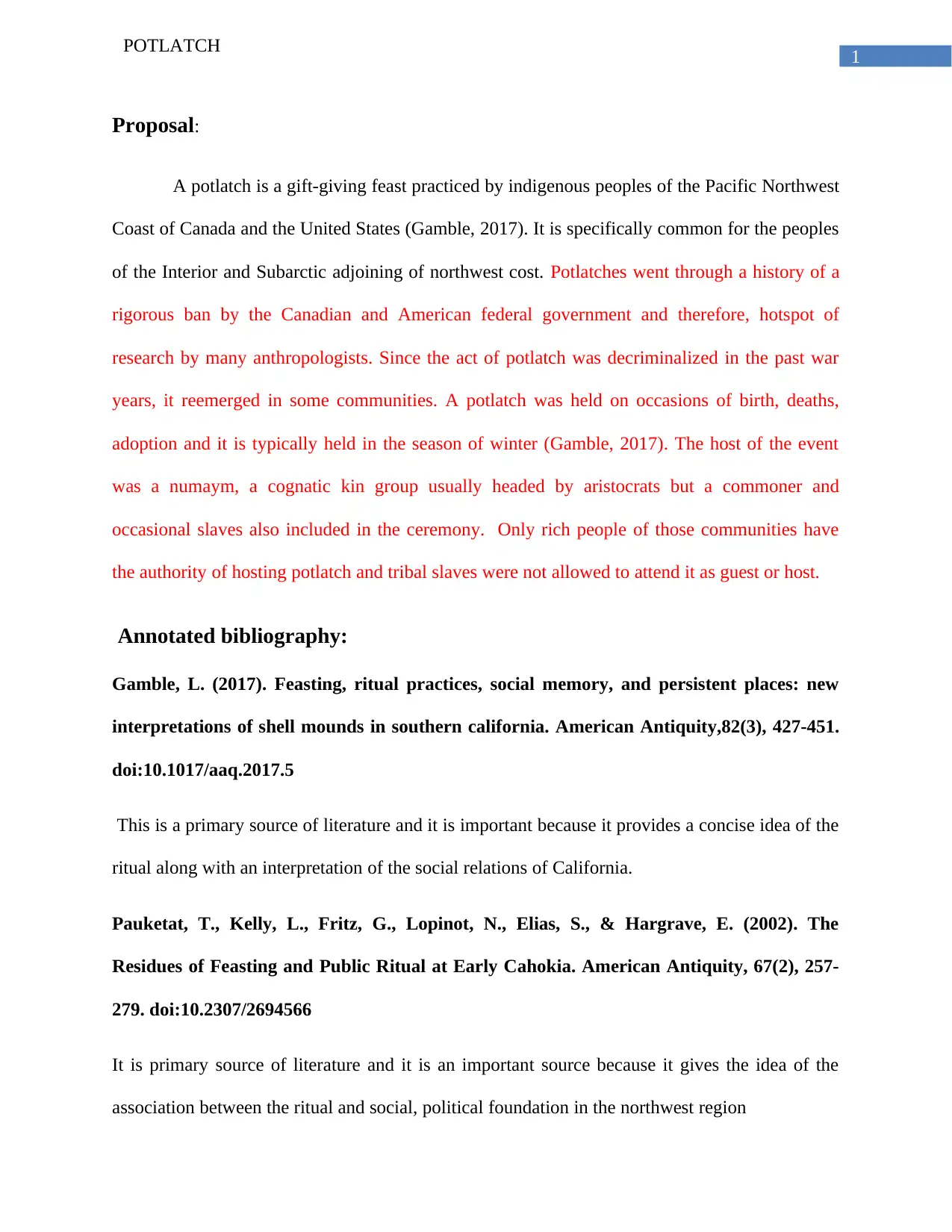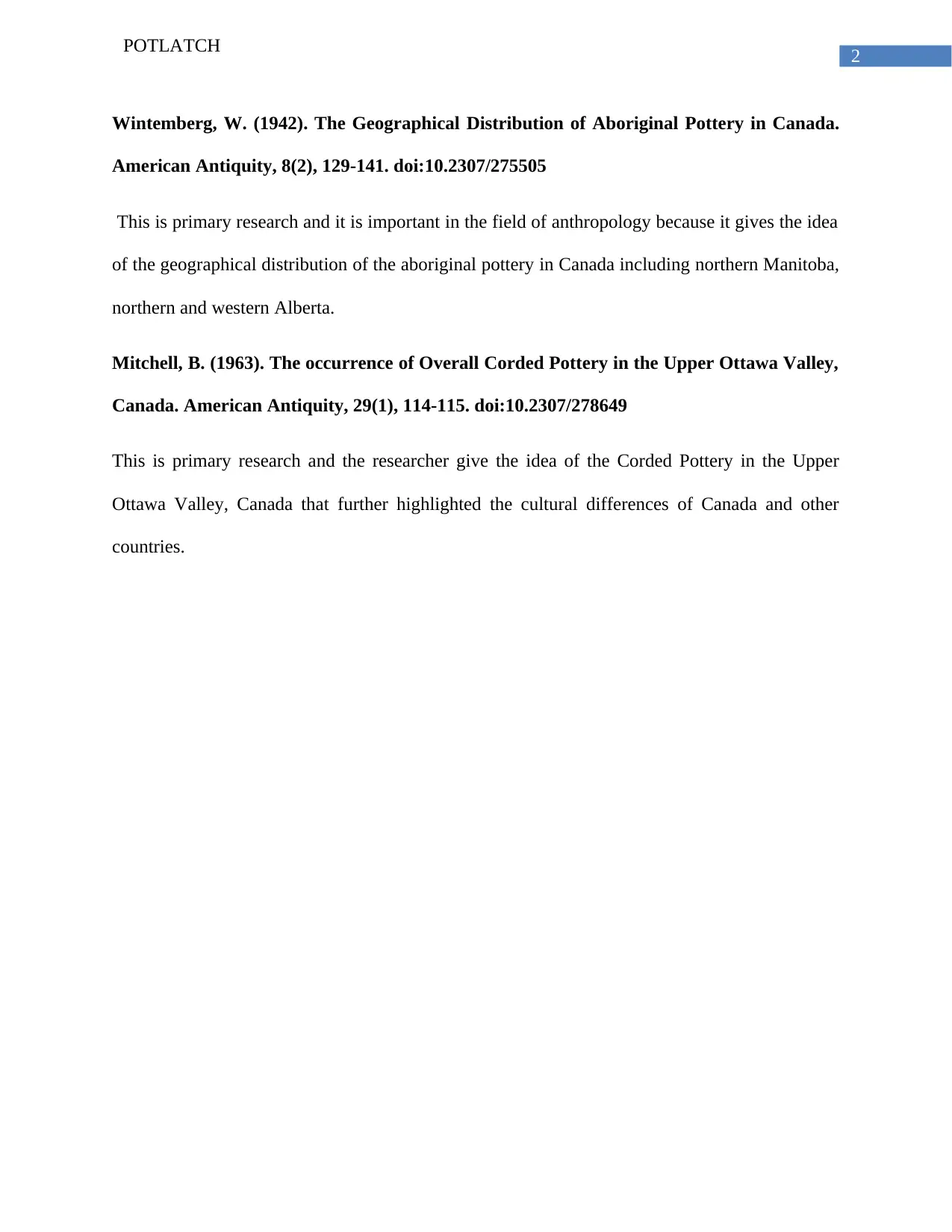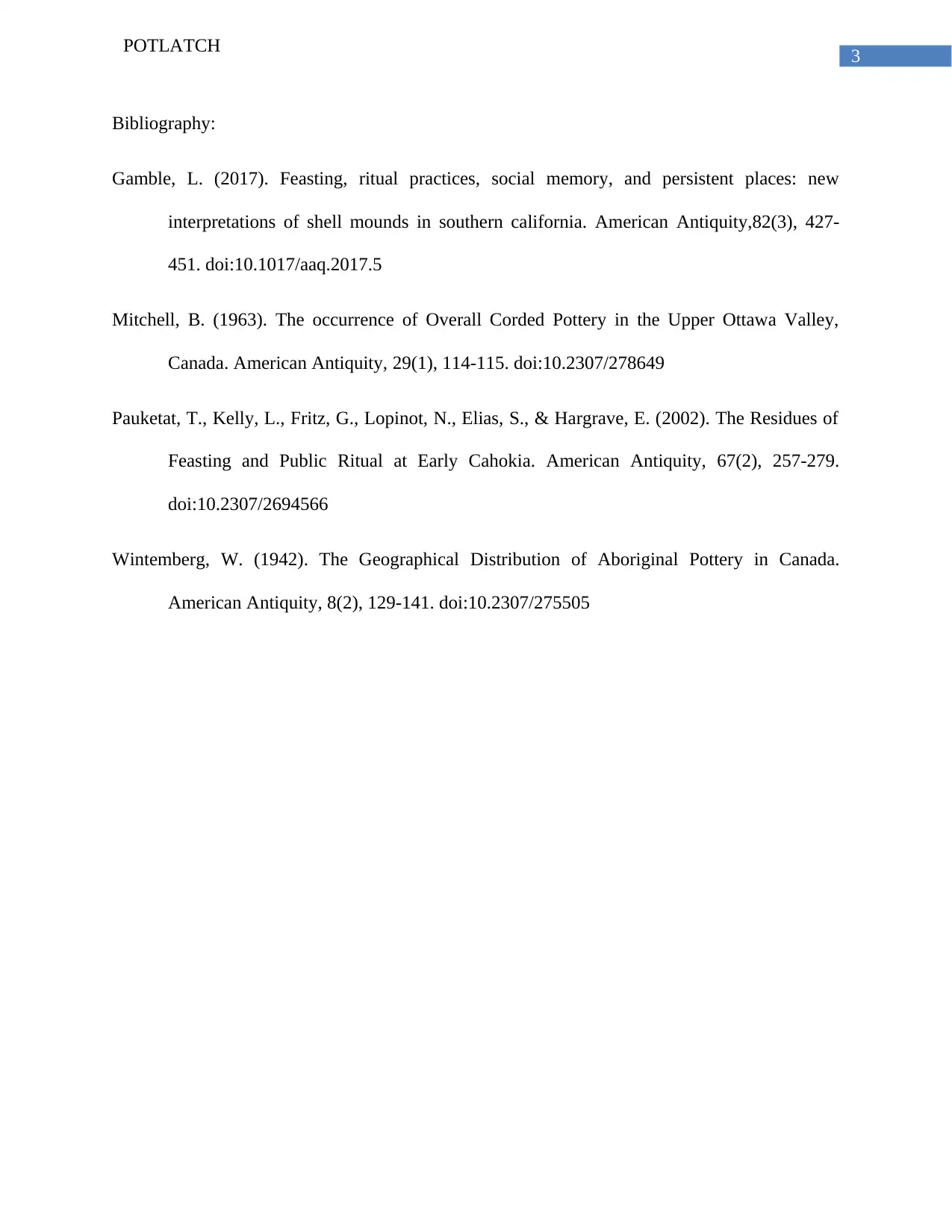Anth 1120 - Potlatch Proposal: Indigenous Cultures of British Columbia
VerifiedAdded on 2023/04/20
|4
|621
|198
Essay
AI Summary
This is a student-submitted essay proposal focusing on the Potlatch tradition among the indigenous peoples of the Pacific Northwest Coast, particularly in British Columbia. Potlatch is a gift-giving feast that has historical significance, including a period of being banned by Canadian and American federal governments. The proposal includes an abstract describing the topic and annotated bibliographies of primary research on feasting rituals, social relations, aboriginal pottery distribution in Canada, and corded pottery in the Upper Ottawa Valley. The essay aims to explore a topic relating to indigenous cultures of British Columbia, such as masks, whaling rituals, mythology, archaeology, economy, history of reserves, potlatch, totem pole symbolism, residential schools, language loss/revitalization, traditional territories, treaty issues, spirit dancing, cross-border issues, vision quests, blankets, weaving, cedar medicines, animal relations, or fishing techniques. The document includes a bibliography with citations formatted according to American Antiquity guidelines.
1 out of 4





![[object Object]](/_next/static/media/star-bottom.7253800d.svg)